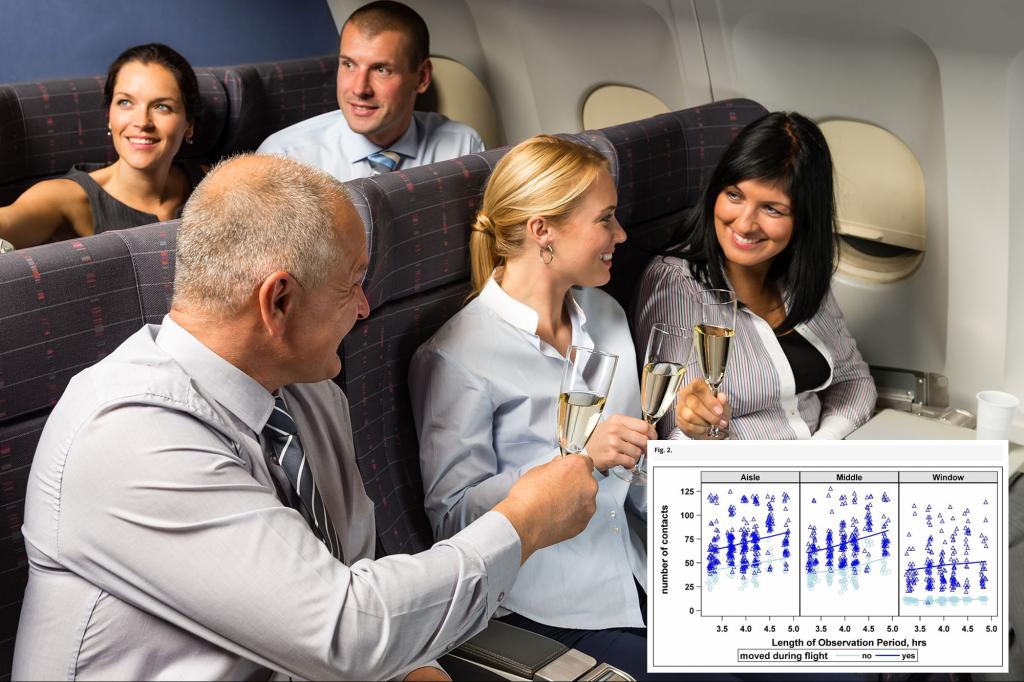Researchers from Emory University in Atlanta conducted a study to determine which section of an airplane is the least susceptible to germs. They flew on 10 transcontinental flights and analyzed the rate of virus shedding and infection transmission among 1,540 passengers. They found that outside of certain first-class cabins, window seats are the most sterile due to being further from the aisle, which is frequented by microbe-carrying passengers and crew members. Window-seaters are also less likely to leave their seats during flights, reducing their contact with others.
Passengers in aisle seats were found to have an average of 64 contacts with other passengers per flight, middle seaters had 58 contacts, and window seaters had just 12 contacts. Sitting at the very back of the plane is also considered optimal for preventing infection because passengers do not have to worry about being breathed on by those behind them. The airflow on an airplane moves from back to front, further reducing the risk of transmission in the rear sections of the aircraft.
In addition to choosing the right seat, passengers can further reduce the risk of contamination by avoiding contact with the airplane’s dirtiest areas, including lavatory doors, overhead bins, safety cards, and tray tables. This is important due to the large number of people on airplanes, making them potential breeding grounds for germs. The researchers highlighted the importance of minimizing contact with high-touch surfaces and maintaining good hygiene practices while traveling.
The study authors emphasized that inflight transmission of infectious diseases is a significant global health concern, with over 3 billion airline passengers traveling annually. While there have been cases of inflight transmission documented, the exact risks of transmission of respiratory viruses in an airplane cabin have yet to be scientifically proven. Studies on the transmission of severe acute respiratory syndrome (SARS) and pandemic Influenza (H1N1p) on airplanes suggest that air travel can facilitate the rapid spread of emerging infections and pandemics.
Overall, the research conducted by Emory University sheds light on ways that passengers can reduce their risk of exposure to germs while flying. Choosing window seats and sitting in the back of the plane, as well as avoiding contact with high-touch surfaces, can help minimize the chances of infection transmission. While airplanes may be perceived as disease-prone environments, taking precautions and practicing good hygiene can make air travel safer for everyone onboard. Further studies are needed to fully understand the risks of inflight transmission and develop effective strategies to mitigate them.















